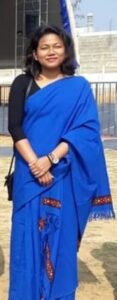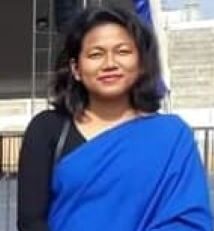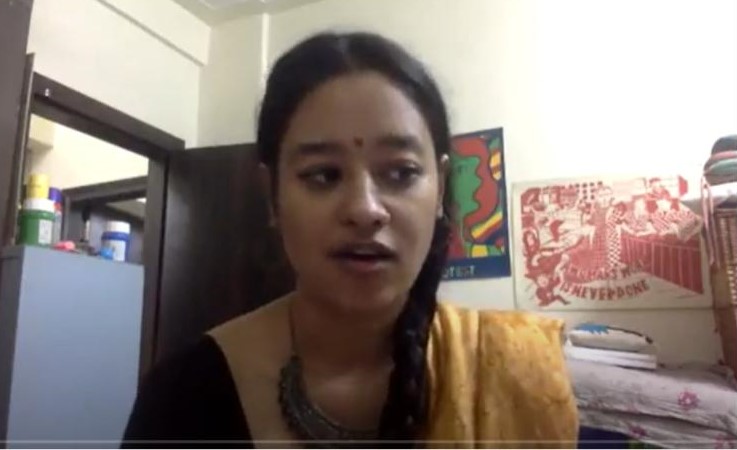Rakhee Naiding
<blockquote=”font-weight: 400;”>
The fifth volume of Prabuddha: Journal of Social Equality has been published and it carries articles by women authors from anti-caste thought and indigenous radical movements in the USA. SAVARI is happy to share an excerpt from: Being Dimasa: Caught in the Revolving Door of Identities, Prabuddha: Journal Of Social Equality, 5(1), 31-39
 Abstract: Assertions of self-determination by numerically small communities like the Dimasas are layered in many kinds of complexities. They are othered in regions that are themselves othered by the nation-state. The main theme in this paper is that of relationships forged between a community by descent and community by the political association as a form of self-determination.
Abstract: Assertions of self-determination by numerically small communities like the Dimasas are layered in many kinds of complexities. They are othered in regions that are themselves othered by the nation-state. The main theme in this paper is that of relationships forged between a community by descent and community by the political association as a form of self-determination.
[…] The Dimasas, and other tribes of the North-Eastern region, are racially of the Indo-Mongoloid stock, and linguistically speak one of the Tibeto-Burman family of languages. Now coming specifically to the Dimasas: at present, we live in the central and southern parts of Assam, as well as in Nagaland, in and around the city/town called Dimapur, which was also the capital, at one point in time—I think in the 13thcentury CE—of the Dimasa king, and hence it is called Dimapur. Presently, we constitute a population of about 1.2 lakh individuals, as per the last census. This is an approximation that I have reached at from the mother language indicator from the last census, and it may be a little more than this, but not less. Although, we are distributed in different districts of Assam, as well as in Nagaland, besides a small population in Manipur; the largest population of Dimasas is in the Dima Hasao district of Assam. It is a hill district, governed under the Sixth Schedule of the Constitution of India, which gives autonomy to the hill tribes in different parts of North-East India, and so we run our own social, political and economic administration. Culturally, Dimasas practice ancestor worship and follow the patriclan as well as the matriclan systems. We have our own clan deities. Clans have their own sacred groves or sacred spaces that are called Daikhos.
I was born in a town called Haflong, which is the headquarters of the Dima Hasao district. It is an old hill station, established under the British regime in the early 1900s when the railway connecting Bengal to Burma was built. With the introduction of railways, the North Cachar hills formed a passage up to Burma. The town is constituted mainly of tribal communities, and some non-tribal ones. Since the foundation of the town was laid by the British colonial regime, we had these Pathans coming in from the North-West Frontier Province to lay down railway lines. The first school that I went to, St. Agnes High School, was established by French sisters in 1918. I still remember that my school had a huge hall and the support structure of the hall was made of these railway tracks that had been put up as pillars, holding up the roof. The sisters would tell us that the Pathans came and helped them build the school, giving these tracks as pillars, and there was a bunker –we used to call it Igloo. It may have been built during the time of the Second World War under the threat of attacks.
We had quite a cosmopolitan culture growing up; we had all these communities, and the Pathans had brought their Hindi with them. Although my region became a part of Assam, while growing up, we did not know a word of Assamese. Our lingua franca back home was this pidgin Hindi that was called the Haflong Hindi. I don’t think any Hindi speaker would call it Hindi but we called it Haflong Hindi, the link language being Hindi that was brought by the Pathans who had come at that point in time, and left afterwards. And then we had all these tribal language words, Bengali words, Nepali words mixed in. That was what we spoke growing up. Later on, specifically in the early 2000s, when a lot of ethnic conflicts started, we became much more aware of our own ethnic and tribal identities. But before that I did not have much of that awareness. It is not that such contestations and conflicts were not there, but growing up as a school kid I did not really feel that I was different from the other kids around, or anything like that. This is an experience of Dimasas only from the hills. We have Dimasas in the Cachar plains and also in the Barak valley. But their experience, again, would be different. There we have Dimasas who were kings at some point in time when we had the capital in Khaspur in Barak valley in Cachar. They converted to Hinduism, especially the royalty. They were brought under the Brahminical fold. Some of them took up Hinduism where they started calling themselves not Dimasas, but Barman Cacharis. They would even wear the janeu (sacred thread). This has led to certain tensions between the hill Dimasas and the plain Dimasas of the Barak valley, though things are perhaps better today with multiple means of communication slowly opening up. We are still following our traditional faith and our own ancestor worship. In the Barak valley, too, they did so, but then there were certain changes. […]
Read the full article here: Naiding, R. (2021). Being Dimasa: Caught in the Revolving Door of Identities. Prabuddha: Journal Of Social Equality, 5(1), 31-39.

